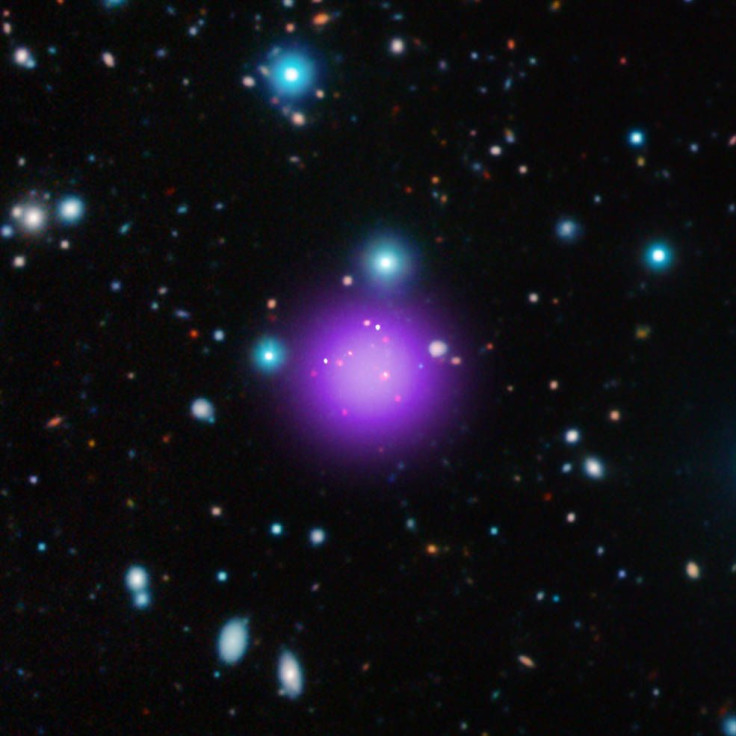NASA Discovers Most Distant Galaxy Cluster About 11.1 Billion Light-Years From Earth

NASA’s Chandra X-ray Observatory and other telescopes have led to the discovery of what is claimed to be the most distant galaxy cluster ever found. According to the space agency, the newly discovered object may have been caught immediately after its birth.
Dubbed “CL J1001+0220,” or “CL J1001” in short, the galaxy cluster is located about 11.1 billion light-years from Earth, pushing back the formation time of galaxy clusters — which consist of thousands of galaxies bound together by gravity — by about 700 million light-years, NASA said.
The latest findings were published in a study that appeared in the Astrophysical Journal on Tuesday. The researchers said in the study that the core of CL J1001 consists of 11 massive galaxies, nine of which are experiencing formation of new stars at a rate, equivalent to over 3,000 suns forming per year. According to researchers, this is an extremely high value for any galaxy cluster.
“This galaxy cluster isn’t just remarkable for its distance, it’s also going through an amazing growth spurt unlike any we’ve ever seen,” Tao Wang of the French Alternative Energies and Atomic Energy Commission (CEA), who led the study, said in a statement.
Researchers said that Chandra and European Space Agency’s XMM-Newton Observatory detected diffuse X-ray emission that came from a large amount of hot gas, which, according to astronomers, is a major defining feature of a true galaxy cluster.
“It appears that we have captured this galaxy cluster at a critical stage just as it has shifted from a loose collection of galaxies (protoclusters) into a young, but fully formed galaxy cluster,” David Elbaz from CEA and the study’s co-author, said in the statement.
The study’s results suggest that compact galaxies in galaxy clusters like CL J1001 likely form their stars during brief and more violent outbursts than galaxies that are outside such clusters. In addition, the latest discovery also indicates that much of the star formation in these galaxies takes place after the galaxies fall onto the cluster.
Further analysis of the results after they were compared to previous computer simulations of the formation of galaxy clusters revealed that CL J1001 has a remarkably high amount of mass in stars, which is greater than the cluster’s total mass.
“The presence of both a collapsed, cluster-sized halo and a predominant population of massive SFGs — star-forming galaxies — suggests that this structure could represent an important transition phase between protoclusters and mature clusters,” the scientists said in the study.
© Copyright IBTimes 2024. All rights reserved.






















